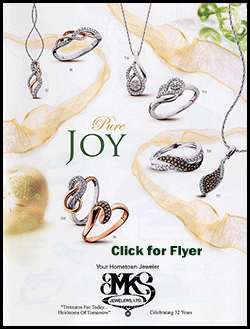|
 "I was supposed to go to architecture school," said Jiménez,
also known as Chef Gonzo, whose whimsical creations often
reflect industrial themes. "I was supposed to go to architecture school," said Jiménez,
also known as Chef Gonzo, whose whimsical creations often
reflect industrial themes.
"I enrolled and everything, but when I was a teenager, I left
home and started cooking in a restaurant."
Jimenez, who makes a line of handmade chocolates for the Grand
Hyatt, studied culinary arts and molecular gastronomy and earned
a degree in pastry arts at the IAG (Instituto Argentino de
Gastronomía) in Buenos Aires, honing his skills at luxury hotels
in Argentina, Colorado and New Orleans.
The 29-year-old spoke to Reuters about learning how to temper
chocolate from elderly German women in Patagonia, and his dream
of representing his home country in the World Pastry Cup
competition.
Q: Did you always want to be a pastry chef?
A: No, I first started as a savory chef but switched into
pastries because I really like the crafty side of it, like
making wedding cakes and things like that.
Q: How did you become interested in food?
A: I was always around when my mom and the maid were
cooking. It was always Spanish cuisine because my dad is from
Spain, and my mother learned cooking from my grandmother on my
dad's side.

Q: Is Argentina represented in your pastry?
A: I use a lot of dulce de leche (caramelized milk) and
quince paste and corn, which represents the north of Argentina.
The cuisine of my country is a mixture of different European
countries — French, Italian and Spanish. We don't have a
distinguished cuisine, as such.
Q: Does Argentina have a tradition of chocolate?
A: Yes. In Patagonia, we have the Germans who ended up there
after the war (World War II). This beautiful town called Bariloche has a couple of chocolate factories. It was while
working at small boutique hotels in Patagonia that I started
becoming interested chocolate, working with elderly German women
who taught me.
Q: What did you learn?
A: Mostly how to temper the chocolate by passing it through
three different temperatures to create a chemical reaction. Once
you melt it, you have to temper it; otherwise, it'll never get
solid. It's a pretty hard thing to do. I still mess up now and
then. Chocolate, versatile as it is, is very temperamental. I
can make anything out of chocolate from truffles and bonbons to
cakes and mousses to elaborate sculptures and structures. That's
why I love it. But it's tricky.
[to top of second column] |
 Q: How did you start sculpting with chocolate?
A: When I came to the States I saw pastry
chefs doing it. I started reading about it, coming up with different
structures while working as a pastry chef in Colorado. My old chef
didn't want me fooling around with chocolate sculptures. So if we
had a Sunday brunch and I wanted to put a sculpture on the buffet, I
had to work overnight. I would work 48 hours in a row making the
sculpture, and in the morning it was there. I really love it.
Q: Where do you get your inspiration?
A: I'm inspired by whatever I see. A year ago I was into mechanics — bolts and nuts and industrial look of things. Before that, I was
into steam pumps. Now I'm working more on abstract pieces.
Q: Where do you hope to take this?
A: It's 5 percent of what I do as a pastry chef. There are
still so many things I don't know about chocolate ... I would love
to represent Argentina in the World Pastry Cup (an international
pastry contest that takes place every two years in Lyon, France).
Q: Do different countries treat chocolate
differently?
A: In Argentina, they do traditional chocolate, like in Europe. They
don't use as many crazy colors and cocoa butter and their flavors
are very subtle. It's different here in the States. Everything is
more dramatic.
Q: Do you eat chocolate?
A: I work with dark, milk and white chocolate. If I have to
eat chocolate, I would rather eat milk. But actually I don't eat
chocolate. I try it, but it's not like I'm going to buy myself a box
of bonbons. ___
Chocolate Bark
500 grams dark glaze chocolate
100 grams toasted chopped almonds
100 grams chopped walnuts
100 grams red raisins
100 grams dried cranberries
100 grams of Rice Krispies
100 grams chopped pistachios
Melt chocolate slowly in a double boiler, then add all dry
ingredients and spread out on a silicone, nonstick baking mat or
wax paper. Let the chocolate set and then cut in small pieces.
(Editing by Patricia Reaney and
Marguerita Choy)
[© 2013 Thomson Reuters. All rights
reserved.] Copyright 2013 Reuters. All rights reserved. This material may not be published,
broadcast, rewritten or redistributed.
 |